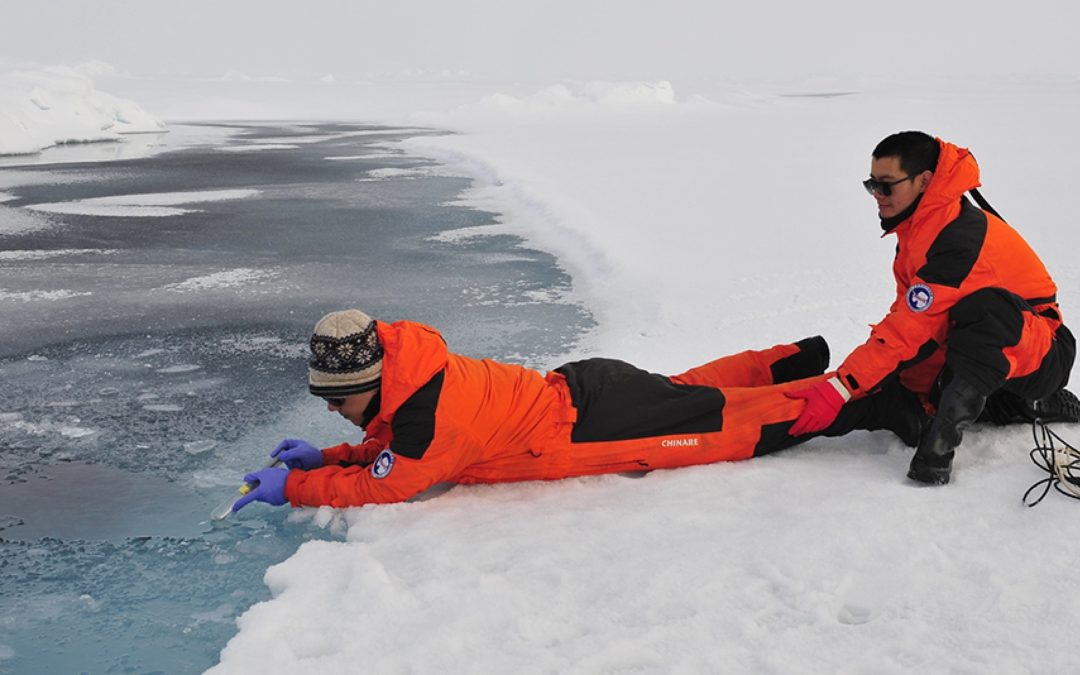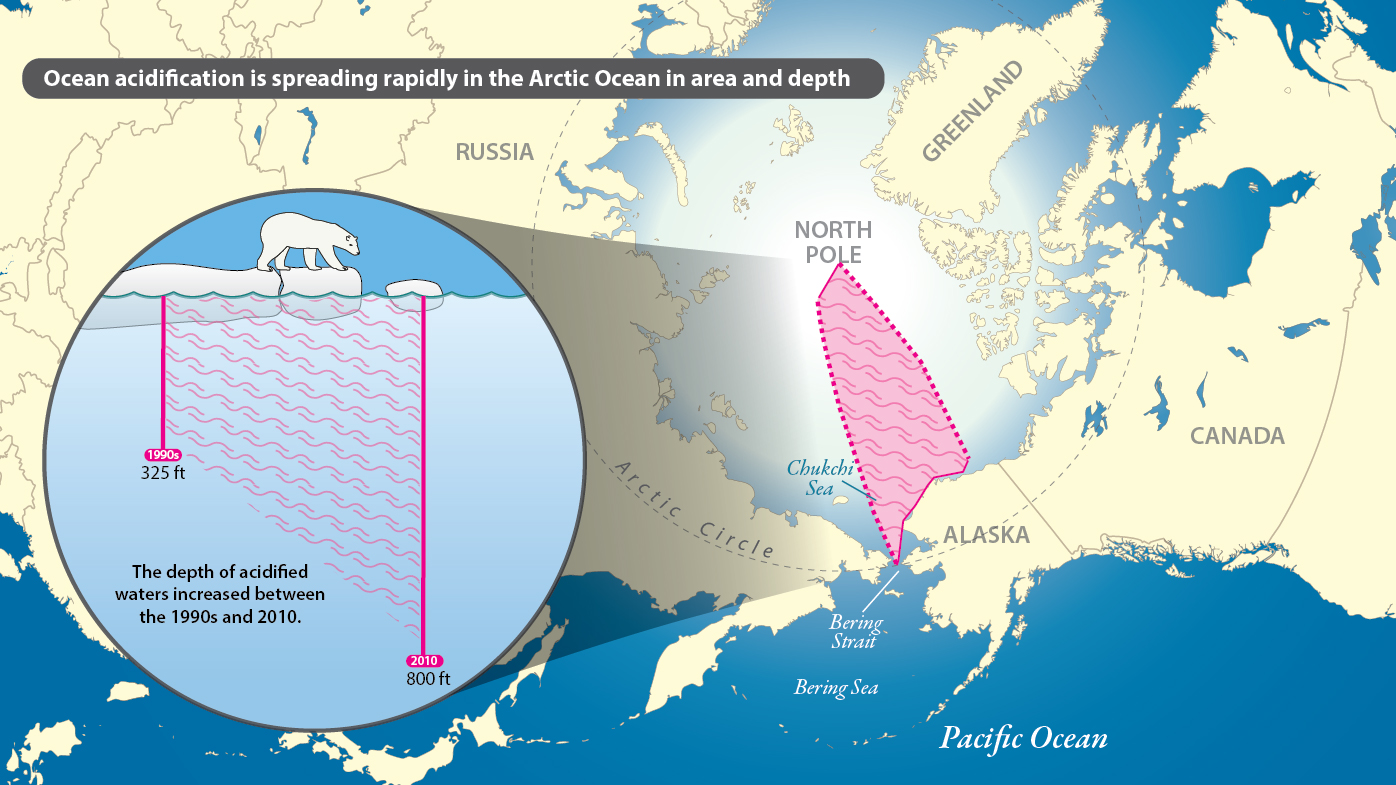SOURCE: NOAA
DATE: March 9, 2017
SNIP: Ocean acidification is spreading rapidly in the western Arctic Ocean in both area and depth, potentially affecting shellfish, other marine species in the food web and communities that depend on these resources, according to new research published in Nature Climate Change by NOAA, Chinese marine scientists and other partners.
“The Arctic Ocean is the first ocean where we see such a rapid and large-scale increase in acidification, at least twice as fast as that observed in the Pacific or Atlantic oceans,” said study co-author Wei-Jun Cai of the University of Delaware.
“The melting sea ice is like a pond floating on the Arctic Ocean,” said Cai. “It’s a thin water mass that exchanges carbon dioxide rapidly with the atmosphere above, causing carbon dioxide and acidity to increase in the meltwater on top of the seawater. When the ice forms in winter, acidified waters below the ice become dense and sink down into the water column, spreading into deeper waters.”


